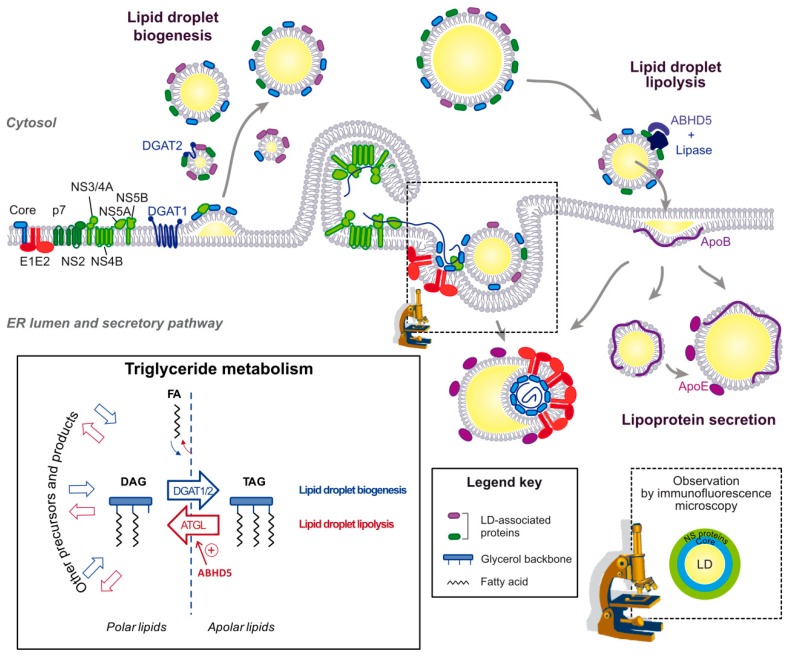Figure 4.
Model for HCV assembly and release. HCV morphogenesis likely occurs at contact sites between the ER-embedded replication machinery and envelope glycoproteins on one side, and the core-coated lipid droplets on the other side. This localization of the assembly complexes might facilitate the access to the lipoprotein pathway, with the incorporation of apolipoproteins and an excess of neutral lipids into nascent lipo-viral particles. A few host factors involved in HCV assembly are represented. Note that it is unclear how virus and lipoprotein morphogenesis converge. Please refer to the main text and references for discussion on this topic. The bottom left box illustrates the only committed steps in the triglyceride metabolism: the switch between diacylglycerol (DAG) and triacylglycerol (TAG), representing the last step in TAG synthesis and the first step in TAG lipolysis, respectively. Switching from DAG to TAG corresponds to a change in lipid polarity: the TAGs are apolar and excluded from membranes, therefore their accumulation promotes lipid droplet biogenesis, while the DAGs are polar and serve as intermediates to draw triglycerides from the lipid droplet inner core during lipolysis. We recommend the interested reader to refer to the review by Pol A. et al. for a comprehensive overview of the triglyceride metabolism [73].

